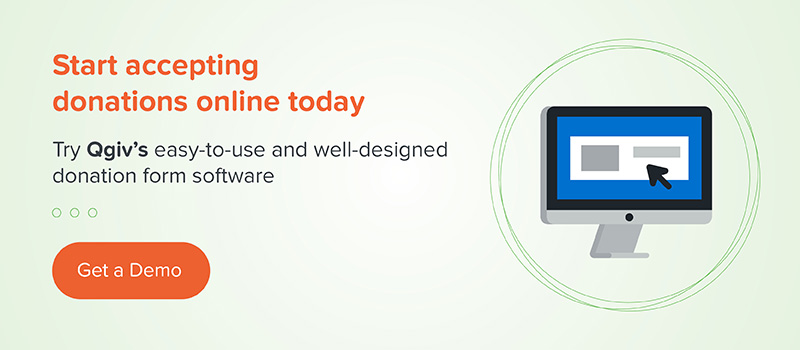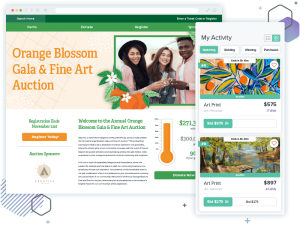If you’re in the nonprofit industry, you’re probably more interested in #GivingTuesday than you are in Black Friday — at least while you’re on the clock! If you’re participating this year, here are some dos and don’ts that will help you make it a successful day.
DO make sure you tell a compelling story in all your #GivingTuesday copy
Like any other giving campaign, your #GivingTuesday campaign will be most successful if you take the time to come up with a narrative that ties together all of your fundraising elements. Nailing down your story will take a little work at first, but it will help you create compelling emails, images, social posts, giving forms, and more.
Want to see a great example of a simple story? Check out the one-sentence story a Massachusetts nonprofit used for a recent fundraiser.
DO optimize your form
#GivingTuesday is one huge push to get donors to notice your organization, get inspired about your mission, and donate to your nonprofit. The decision to make a donation is always an emotional one, and that will be even more true during the event. Keep this in mind as you optimize your form! You want the giving process to be as easy as possible so as not to sever the emotional attachment your donors develop before they decide to give. Here are some questions to keep in mind as you prepare your donation form for #GivingTuesday:
- Is your donation form easy to find if someone lands on your homepage?
- Is your form easy to use if your donor is on a tablet or mobile phone?
- Are there suggested donation amounts on your form? (hint: providing a range of different suggested donation amounts can often result in higher donation amounts than you’d receive if you don’t have them at all)
- Does your donation form include an element of the story that brought donors to that page? (think a picture, quote, etc. that will help donors maintain their emotional connection to your cause)
- Do you include too many extra fields on your form? (donor churn increases when you add more than one or two extra fields to your form, even if they’re not required fields).
Try doing a trial run on your donation form. What would be annoying to you if you were a donor? What could you do to make the donation process easier?
DO build a support network online
You know how bands and businesses have “street teams” that help build hype for events? You need an organized, online street team to help build support for your #GivingTuesday campaign. Part of the beauty of #GivingTuesday is the social aspect; people find, share, and support different nonprofits. Preparing a group of people to be brand ambassadors for your nonprofit leading up to (and during!) the event will help your nonprofit boost its visibility on a day when a lot of other organizations will be doing to same thing. Staff, volunteers, and loyal donors all make excellent brand ambassadors — who can you ask to spread the word about your organization?
This goes hand-in-hand with the next point, which is….
DON’T assume people will know you’re participating
When you’re building a campaign, your whole world revolves around it (or at least it certainly feels that way). It’s hard to believe, sometimes, that other people don’t share your focus on that campaign. That’s what makes it so easy for nonprofits to fall into the “if I build it, they will come” mindset — it’s easy to forget that not everyone is as aware of your nonprofit’s campaigns as you.
Don’t let yourself fall into that mindset! Make sure you tell everyone that you’re participating in #GivingTuesday — even groups that you think will already know that you are. You can’t assume people will know you’re participating, even if they’re loyal donors and have donated to your past #GivingTuesday campaigns.
DO have a communications plan in place for the day of the event
In the inevitable flurry of #GivingTuesday, it will be easy to get flustered and make a mishmash of your communications. Don’t let that happen! Spend a while building a communications plan for the event. Who will be manning which social media account? Who will be fielding inquiries from curious donors? What should you be talking about (hint: it’s the story you put together in step one)? Have a plan, make sure everyone knows their roles, and take precautions to make sure no one staff member (or volunteer) is overwhelmed.
DON’T “set it and forget it” — be active online during the whole day
#GivingTuesday is not the day to take shortcuts when you’re managing your online presence. There’s no harm in scheduling a few automated tweets (probably), but you can’t automate your entire communications plan this day. Staying active on the internet — on social media, especially — will help keep you visible and will help stoke excitement among potential donors. Try doing things like sending Tweets thanking your latest donors, updating followers on the amount you’ve raised, and sharing parts of your story will keep you busy, sure, but they’ll also get people excited about donating to you. Stay active, stay responsive, and have fun with it!
DO prepare some fantastic images before the event
Your story is important. Your story will be what draws donors to you and will inspire them to donate to you. You know what’s one of the most effective ways to tell your story? By using an image. Images are easy to send out, are eye-catching, are fun for your donors (and street team!) to share, and are very good at inspiring people. Prep some great images (and videos!) you and your team can use to support your #GivingTuesday campaign. Keep them somewhere that they’re easily available (like a shared folder or your DropBox account) so everyone can access and use them as they spread your story around the internet.
DON’T limit it to just one day
The neat part about #GivingTuesday is that the whole fundraising push can extend beyond the 24-hour period that actually makes up the event. At its heart, #GivingTuesday is a push for people to balance the shopping inherent to the holidays with more charitable spending. It’s a wonderful opportunity for a day-long fundraising campaign, sure, but it’s also a wonderful way to kick off your nonprofit’s year-end fundraising period. If you’re already building a narrative, collection of images, and other marketing materials, why not carry the momentum of #GivingTuesday into the remaining weeks in the year?
DO have a thorough plan to follow up with new donors
One of the biggest worries I see from nonprofit professionals is that the flood of new donors that nonprofits can experience on #GivingTuesday is not sustainable. They might have a point. But if you’re going to participate in a #GivingTuesday fundraising campaign, I’d encourage you to have a well-thought out plan in place for thanking new donors, communicating with them after they’ve made their gift, and cultivating them to be future donors.
DON’T forget to measure your results
Was your #GivingTuesday campaign successful? You might have gotten a bunch of donations, but what other metrics can you measure that will show if your campaign was a useful project? Be sure you measure your results to gauge your campaign’s success — it’ll help you run more effective campaigns (whether for future #GivingTuesday events or other campaigns) and pinpoint what strategies work and what don’t. Here are some questions for you to consider:
- How many new donors did you acquire?
- How many of those new donors gave again in the following months?
- What’s your retention rate for new donors after 6 months? What about a year later?
- Which of your fundraising posts were most successful? (hint: try comparing the performance of image-based posts and text-based posts, different kinds of emails, etc.)
- Which of your social channels saw the most engagement? What can you do to boost engagement on other channels?
- How many hours did your staff and volunteers put into your #GivingTuesday campaign? What was the return on that investment? Was it worth the effort?
Want other tips for running an awesome #GivingTuesday campaign? Check out these resources:
- 15+ Giving Tuesday Campaign Ideas (and Expert Tips) for 2021
- 2021 Giving Tuesday Guide
- 4 Last-Minute Tips To Rock Your Giving Tuesday Campaign



